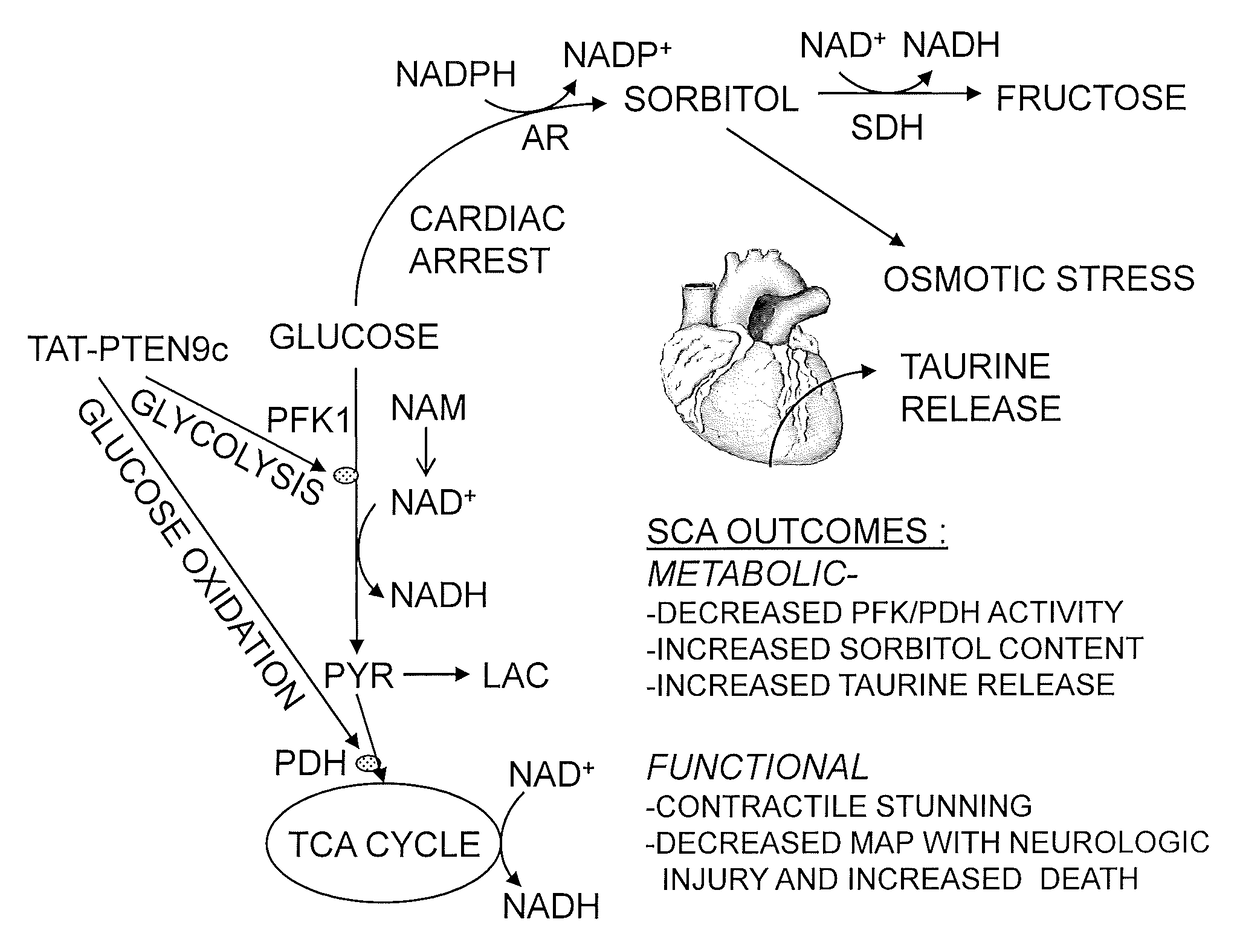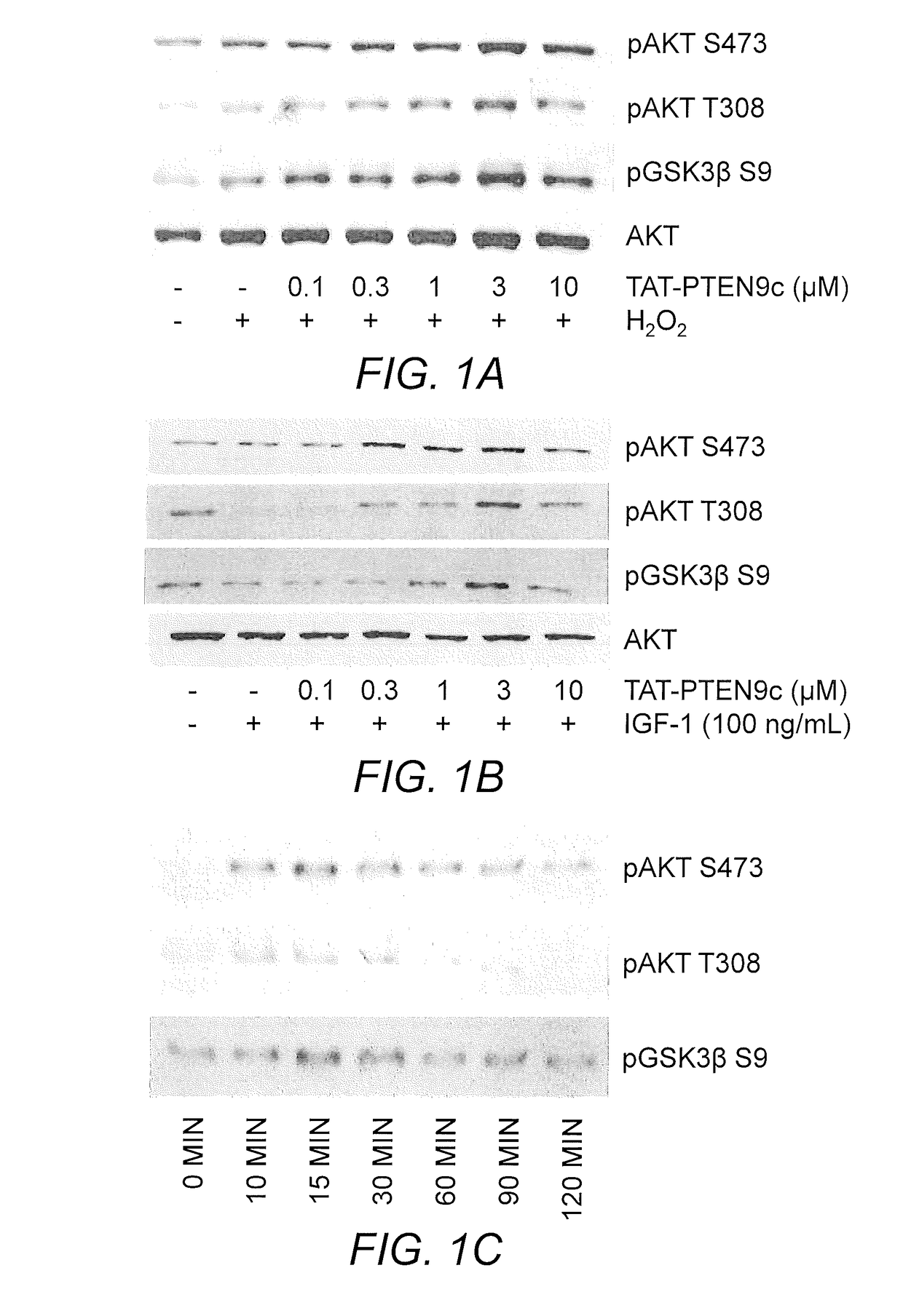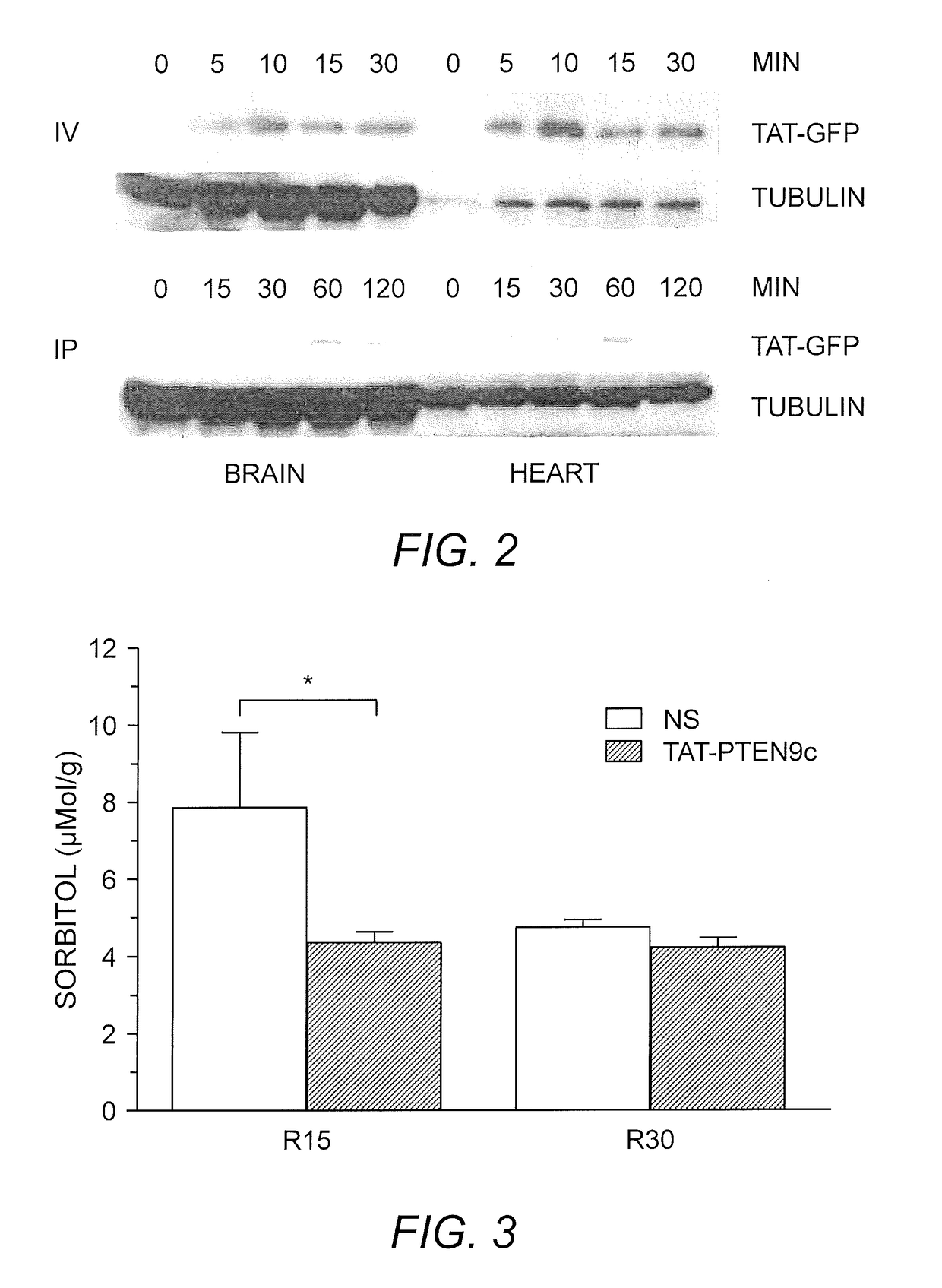Peptides and Method for Treatment of Cardiac Arrest
a technology of peptides and cardiac arrest, applied in the field of peptides and methods for treating cardiac arrest, can solve the problems of short-term survival rate of 30-35%, cerebral blood flow may remain abnormally low for several hours, and sustain immediate damag
- Summary
- Abstract
- Description
- Claims
- Application Information
AI Technical Summary
Benefits of technology
Problems solved by technology
Method used
Image
Examples
example 1
c Improves Survival after Cardiac Arrest
[0060]Two TAT-based cell permeable peptides, TAT-PTEN9c and TAT-PHLPP9c, were designed for the treatment of cardiac arrest. TAT-PTEN9c and TAT-PHLPP9c respectively target the carboxyl terminal PDZ binding motif of PTEN and PHLPPP phosphatases. TAT-PHLPP9c (YGRKKRRQRRRLPDCYDTPL; SEQ ID NO:63) and TAT-PTEN9c (YGRKKRRQRRRDQHSQITKV; SEQ ID NO:111) are 20 amino acid residue peptides, wherein 11 amino acid residues are derived from the cell-membrane transduction domain of Tat protein (YGRKKRRQRRR; SEQ ID NO:43) and the remaining 9 amino acid residues are derived from the C-terminal residues of mouse PHLPP1 (LPDCYDTPL; SEQ ID NO:8) or PTEN (DQHSQITKV; SEQ ID NO:4), respectively. Two control peptides, TAT-PTENaaa and TAT-PHLPPaaa, were also prepared. In these control peptides, the last 3 amino acid residues were mutated to alanine.
[0061]Mouse cardiomyocytes were isolated from 1-3 day old mouse pups according to known methods (Zhu, et al. (2014) PLoS O...
example 2
c Administered After ROSC Provides Benefit
[0063]To determine timing of modified peptide administration, TAT-PTEN9c was administrated during CPR or after ROSC. C57BL6 mice were subjected to an established potassium-induced 8-minute SCA protocol (Li, et al. (2015) Am. J. Physiol. Heart Circ. Physiol. 308:H1414-22). Mean arterial blood pressure (MAP) was recorded until 4 hours after successful CPR. TAT-PTEN9c (7.5 mg / kg) or saline (NS) was given intravenously (IV) during CPR and immediately after ROSC.
[0064]This analysis indicated that TAT-PTEN9c administered during CPR had no improvement on resuscitation rate, whereas TAT-PTEN9c administered after ROSC significantly improved MAP at 30 minutes (65.2±1.1 mmHg vs. 57.5±1.0 mmHg in NS) and 4 hours after ROSC (49.9±0.7 mmHg vs. 43.7±3.5 mmHg in NS, p<0.05).
example 3
on Treatment of Nicotinamide and TAT-PTEN9c
[0065]The benefit of co-administration of nicotinamide (NAM) with TAT-PTEN9c was evaluated. C57BL6 mice were subjected to an established potassium-induced 8-minute SCA protocol. Nicotinamide (Vitamin B3) was administered during CPR and TAT-PTEN9c was administered after ROSC with about a 12 minute down time for each group.
[0066]For the control group (normal saline; n=3 ROSC), all mice survived for less than 10 minutes. For the nicotinamide only group (NAM, n=5 ROSC), all mice survived for less than 1 hour. For the NAM and TAT-PTEN9c group (n=7), all mice survived between 1-4 hours.
PUM
| Property | Measurement | Unit |
|---|---|---|
| Composition | aaaaa | aaaaa |
| Pharmaceutically acceptable | aaaaa | aaaaa |
Abstract
Description
Claims
Application Information
 Login to View More
Login to View More - R&D
- Intellectual Property
- Life Sciences
- Materials
- Tech Scout
- Unparalleled Data Quality
- Higher Quality Content
- 60% Fewer Hallucinations
Browse by: Latest US Patents, China's latest patents, Technical Efficacy Thesaurus, Application Domain, Technology Topic, Popular Technical Reports.
© 2025 PatSnap. All rights reserved.Legal|Privacy policy|Modern Slavery Act Transparency Statement|Sitemap|About US| Contact US: help@patsnap.com



